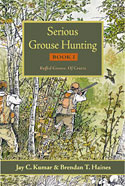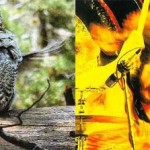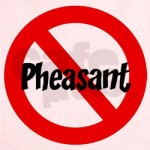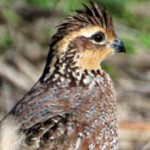Got Legs? ID Chukars Looking Good
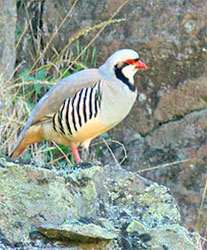 Huns and Quail Too, Pheasants Not So Much
Huns and Quail Too, Pheasants Not So Much
We’ve been assured by some good folks in the Pacific Northwest – including the ex-HMFIC at G. Loomis – that even with our walk-’em-up ruffed grouse conditioning, we are likely not in “steep up/steep down” chukar shape. Which naturally makes us want to hunt chukars. Bad.
Nevada is known for chukars – less known for Himalayan snowcock (not a disease!) – but Oregon, Washington and Idaho are among the states that have these birds too, and apparently in good supply. If you’re within driving (or flying?) distance of Idaho in particular, this might be the year to get after those chukars. If you’re in shape.
From the Lewiston (ID) Tribune:
> According to a recent survey of chukar populations in Hells Canyon and along the lower Salmon River, hunters may have bountiful fall. Idaho Fish and Game biologists counted 1,491 chukars along the lower Salmon. That is an increase of 95 percent compared to the 766 birds counted in 2008 and is a 69 percent increase from the long-term average of 882. It is also the second-highest number of birds counted on the survey, second only behind 2004 when 1,722 birds were recorded.
> The survey showed 125 birds per square mile, an average of 15 groups per mile and 9 birds per group.
> The number of birds per group is down 10 percent from the average, but birds per mile is up 69 percent, groups up 97 percent and groups per mile up 114 percent.
> On the Snake River, 1,276 chukars were counted, the most ever since the department began the surveys in 1994. The 2010 population is up 136 percent compared to the 2008 total of 541 and 76 percent compared to the long term average of 725.
> There were 79 birds per square mile, 7 groups per mile and 12 birds per group.
Compared to average, the birds per group is down 7 percent, but birds per mile is up 76 percent, groups counted up 91 percent and groups per mile up 133 percent.
> Fish and Game biologist Dave Koehler [said] that based on reports from hunters last year and the size of the birds observed, there was likely decent populations last year and they survived well over winter. He said surveyors also noticed many small birds indicating chukars renested following the above-average rainfall in June.
According to the Idaho regs (pdf), the chukar season is already underway.
Huns and Quail Looking Good, Pheasants Not
Koehler said in the above article that “pheasant numbers are dismal, but quail and huns numbers are up.” More info came in this follow-up article:
> Quail hunting [not clear whether this is northern bobwhite, California or both] looks to be outstanding. The survey turned up 213 quail, a 10 percent increase over the five-year average of 193 and 19 percent increase from the 179 counted last year.
> Hungarian partridge, also known as gray partridge, had the best showing with 167 birds counted, a 178 percent increase from the 60 birds counted last year and 92 percent increase from the five-year average of 87.
> Only 5 pheasants were seen during the late August surveys and all of those were from one brood–a hen and four chicks. The meager count represents the fifth consecutive year of poor pheasant production. Last year only one pheasant was counted. But as recently as 2005, 199 pheasants and 32 broods were seen. The five-year average is 66 pheasants and 10 broods.
> Koehler said…a lot of people are reporting seeing broods of young pheasants. That jibes with my experience in recent weeks. I hardly saw any pheasants in July and August but have been bumping into them of late. Many of the birds are small.
> In fact Koehler said many of the birds, of all species, recorded during the survey were small and young indicating birds were able to re-nest following the cold wet spring.
Category: 2010, California quail, Chukar, Forecasts/counts, Hungarian partridge, ID, Northern Bobwhite, Pheasants





